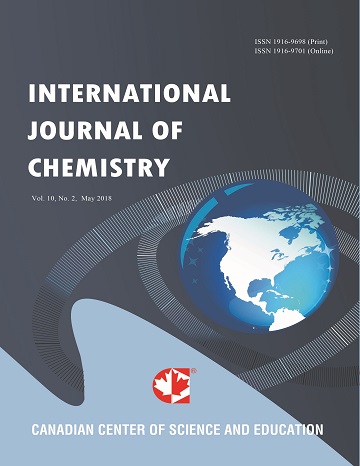A Study of 13C Chemical Shifts for a Series of 2-(4-methoxyphenyl)-substituted-3-phenyl-1,3-thiazolidin-4-ones
- Chino Mannikarottu
- John Tierney
- Kevin Cannon
- Linda Mascavage
- Anthony Lagalante
Abstract
The 13C substituent chemical shifts C-2, C-4 and C-5 (with a particular focus at C-2) for disubstituted 2,3-diphenylthiazolidin-4-ones with one substituent in each phenyl ring are systematically being investigated. The substituents in question are p-NO2, m-NO2, p-F, m-F, p-Cl, m-Cl, p-Br, m-Br, H, p-CH3, m-CH3, p-OCH3 and m-OCH3. This combination of substituents leads to a 13 x 13 matrix array of compounds with the fixed substituents in the 2-phenyl ring constituting the columns and the fixed substituents in the 3-phenyl rings constituting the rows. Including this present study, 81 of the total 169 compounds in the matrix have been analyzed. A single para-methoxy group interacting with another fixed substituent, as measured by 13C substituent chemical shift values at C-2 in either the C-2 phenyl or N-3 phenyl rings, shows little deviation. This changes however when the moiety is either an alkyl group at N-3 or when a para-methoxy group is the fixed substituent on the N-3 phenyl ring. This present study shows that a para-methoxy group on a C-2 phenyl ring shows a similar deviation in the efficacy in the transmission of electronic effects witnessed in this set of matrix compounds and mimics the issues seen with a previously studied para-methoxy substituted system with the para-methoxy group on the N-3 phenyl ring. Reasons for these aberrations are discussed.
 PDF
PDF
